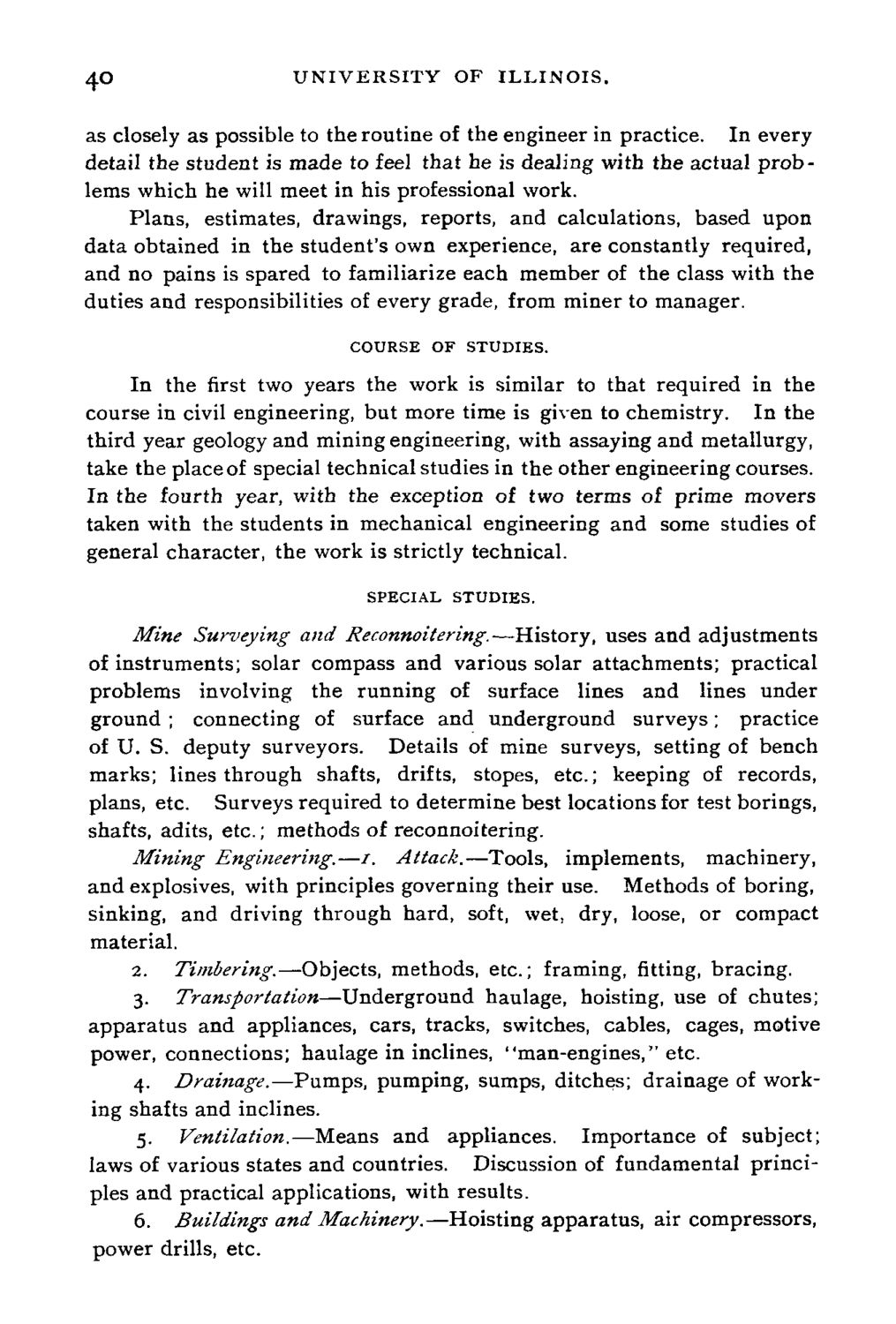| |
| |
Caption: Course Catalog - 1890-1891
This is a reduced-resolution page image for fast online browsing.

EXTRACTED TEXT FROM PAGE:
40 UNIVERSITY OF ILLINOIS. as closely as possible to the routine of the engineer in practice. In every detail the student is made to feel that he is dealing with the actual problems which he will meet in his professional work. Plans, estimates, drawings, reports, and calculations, based upon data obtained in the student's own experience, are constantly required, and no pains is spared to familiarize each member of the class with the duties and responsibilities of every grade, from miner to manager. COURSE OF STUDIES. In the first two years the work is similar to that required in the course in civil engineering, but more time is given to chemistry. In the third year geology and mining engineering, with assaying and metallurgy, take the place of special technical studies in the other engineering courses. In the fourth year, with the exception of two terms of prime movers taken with the students in mechanical engineering and some studies of general character, the work is strictly technical. SPECIAL STUDIES. Mine Surveying and Reconnoitering.—History, uses and adjustments of instruments; solar compass and various solar attachments; practical problems involving the running of surface lines and lines under ground ; connecting of surface and underground surveys; practice of U. S. deputy surveyors. Details of mine surveys, setting of bench marks; lines through shafts, drifts, stopes, etc.; keeping of records, plans, etc. Surveys required to determine best locations for test borings, shafts, adits, etc.; methods of reconnoitering. Mining Engineering.—/. Attack.—Tools, implements, machinery, and explosives, with principles governing their use. Methods of boring, sinking, and driving through hard, soft, wet, dry, loose, or compact material. 2. Timbering.—Objects, methods, etc.; framing, fitting, bracing. 3. Transportation—Underground haulage, hoisting, use of chutes; apparatus and appliances, cars, tracks, switches, cables, cages, motive power, connections; haulage in inclines, "man-engines," etc. 4. Drainage.—Pumps, pumping, sumps, ditches; drainage of working shafts and inclines. 5. Ventilation.—Means and appliances. Importance of subject; laws of various states and countries. Discussion of fundamental principles and practical applications, with results. 6. Buildings and Machinery.—Hoisting apparatus, air compressors, power drills, etc.
| |